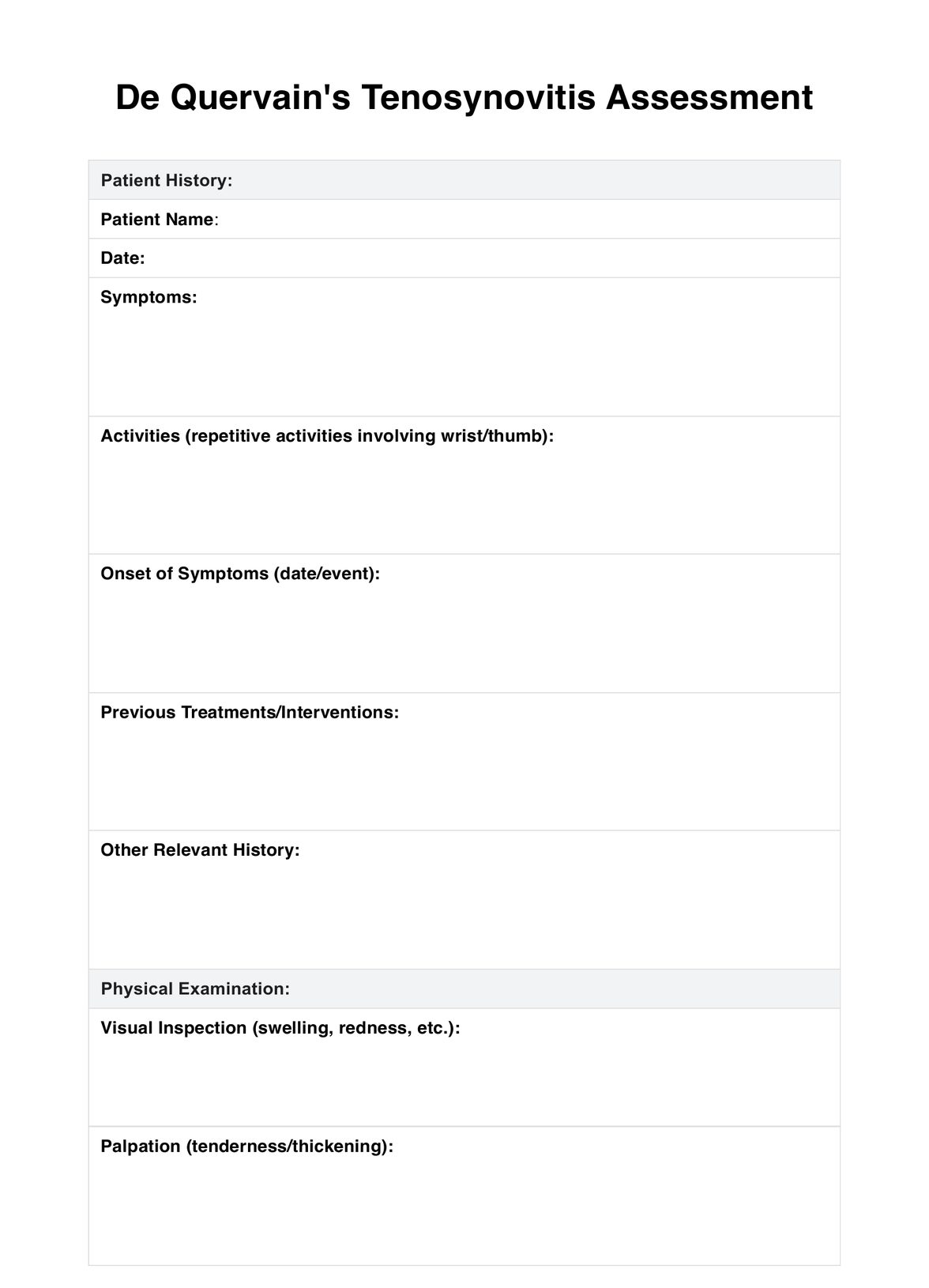Healthcare professionals like physicians, physical therapists, and occupational therapists.

De Quervain's Tenosynovitis Tests
Discover all you need about De Quervain's Tenosynovitis Test. Learn when to use it, benefits, and more. Download our free PDF example.
Use Template
De Quervain's Tenosynovitis Tests Template
Commonly asked questions
When there are symptoms suggestive of De Quervain's Tenosynovitis, including persistent wrist pain and swelling.
Physical examination, including Finkelstein's test, to identify and diagnose the condition.
EHR and practice management software
Get started for free
*No credit card required
Free
$0/usd
Unlimited clients
Telehealth
1GB of storage
Client portal text
Automated billing and online payments











